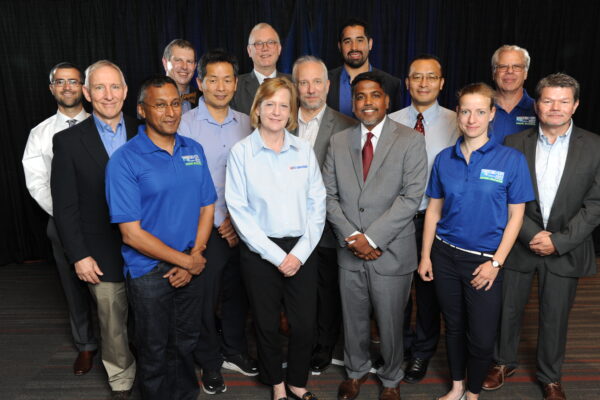
Distinguished Lecturer
Mr. Garth D’Abreu
Distinguished Lecturer

Mr. Garth D’Abreu
Term 2022-2023
He is also the ETS-Lindgren subject matter expert responsible for the ongoing research and development of Reverberation chambers, GTEM cells, and supports the RF filters, EMP applications and wireless device test systems groups. Automotive EMC, Antenna Measurement, and Wireless Test Systems for modern vehicles, incorporate multiple measurement techniques and chamber combinations, for which his expertise is well suited.
Mr. D’Abreu is a Senior Member of the IEEE EMC Society and active participant in standards development as a member of the US ISO and CISPR D automotive EMC standards committees. He has over 27 years of experience in the RF industry and holds a BSc degree in Electronics & Communications Engineering, from North London University, UK.
Talk 1: Reverberation Chambers
Interest in reverberation chambers has grown in the last 15 years, almost in step with the increasing complexity and, in some cases, vulnerability of electronic systems. The severity of this test environment, especially for immunity testing, is due to the inherent attributes of a well-designed chamber. There are many parameters that can be optimized to suit the type of testing to be done, ranging from the traditional EMC tests to the more recently developed sensitivity and radiated power tests performed on wireless communication devices. Mr. D’Abreu discusses the importanat aspects of the design, validation, and testing of reverb chambers, including a look at some of the pitfalls, while drawing on his years of experience in designing chamber installations for EMC and wireless applications.
Talk 2: EMC Chambers and Testing
Anechoic chambers in their various iterations have been around for several decades; the basic principles are fairly well understood and chambers are routinely designed to meet a wide range of test requirements. In this talk, Mr. D’Abreu discusses the intricacies of EMC chamber design with specific emphasis on the importance of RF absorber performance and chamber layout as well as its impact on overall performance. He also looks at some of the compromises involved in optimizing a design for a specific application, the development of EMC test chamber standards, and the technology available to produce compliant test environments.
Talk 3: Vehicle Antenna Measurement
This relatively new branch of automotive testing is in its infancy, with test standards still being developed as technology progresses at a rapid pace. This talk focusses on antenna pattern measurement techniques and over-the-air (OTA) performance testing of the communication systems installed in vehicle platforms. Mr. D’Abreu reviews the adaptation of some of the techniques used in other industries and the design details required to obtain a facility capable of providing accurate and useable vehicle antenna patterns and communication performance data.
Talk 4: Advanced Driver Assistance Systems (ADAS) EMC Testing
Advanced Driver Assistance Systems (ADAS) have become an ubiquitous feature on almost all new vehicles. With the development of any new test, there is the process of first determining the purpose of the test by identifying known and potential vulnerabilities, then finding effective ways of exercising and verifying performance. The systems employed in providing ADAS use several technologies, some of which are relatively new to EMC testing methods. This talk discusses the details of traditional EMC testing and the adaptation of some of these to meet the needs of adequately exercising ADAS related features, and the special considerations associated with testing safety systems that are integral to a driver’s safe operation of a vehicle.





















